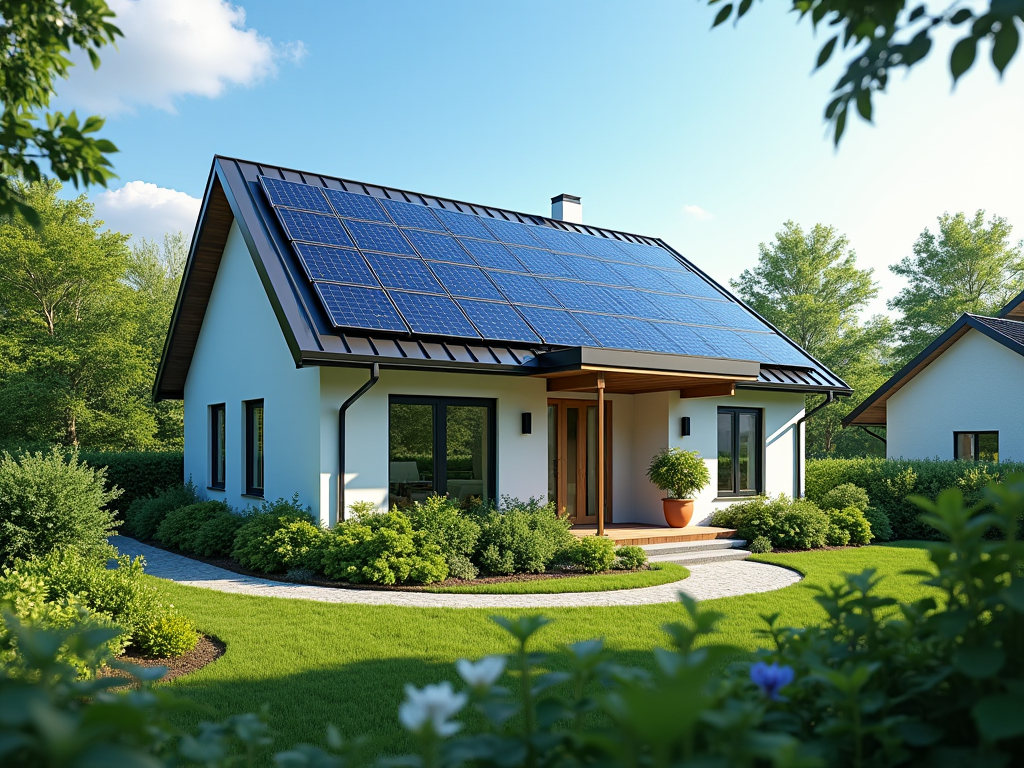5 Ways You Can Use Your Money Right Now to Help Fight Climate Change

With climate change becoming one of the most pressing issues of our time, investing your money wisely can play a significant role in creating a more sustainable future. In this article, we will explore five impactful ways to use your financial resources to combat climate change and help protect our planet. From supporting renewable energy to practicing sustainable living, there are multiple avenues where your dollars can make a difference. Whether you are aiming for long-term investments or immediate actions to reduce your carbon footprint, these strategies offer meaningful avenues for contributing to environmental conservation.
Invest in Renewable Energy

Your investment portfolio can serve as a powerful tool in the fight against climate change by supporting renewable energy industries. Traditional energy sources like coal and oil are major contributors to greenhouse gas emissions, while renewable energy options such as solar, wind, and hydroelectric power present sustainable alternatives. By allocating funds to renewable energy companies, you not only help drive technological innovations but also contribute to reducing overall emissions. Many governments and financial institutions now provide green bonds or ESG (Environmental, Social, and Governance) investment funds specifically targeting sustainable industries, making it easier for investors to direct their money where it has the most impact.
Your shopping habits can have a potent impact on the Earth. By choosing to purchase from environmentally responsible companies, you send a clear message about the demand for sustainable products. Look for brands that prioritize reducing waste, use recycled materials, or actively work to offset their carbon footprint. Before making a purchase, research companies for certifications such as Fair Trade, Certified B Corporation, or CarbonNeutral. Supporting eco-friendly brands not only helps the planet but also encourages other businesses to follow suit, amplifying the impact of your spending decisions. The more consumers demand sustainability, the more companies will innovate to offer green solutions.
Donate to Environmental Causes

One of the direct ways to contribute to the climate fight is by donating to environmental organizations. These groups lead vital projects focused on conservation, policy advocacy, and sustainability research. There is no shortage of initiatives that require financial support, ranging from local clean-up projects to global campaigns fighting deforestation or ocean pollution. You can choose organizations aligned with your personal values, whether they focus on protecting biodiversity, conserving forests, or developing clean technologies. By financially backing these organizations, you provide them with the resources needed to take decisive climate action on a broader scale.
Upgrade to Energy-Efficient Appliances
Improving energy efficiency within your own home is an immediate step towards reducing your carbon footprint. Modern appliances often consume significantly less energy than their older counterparts and can lead to substantial reductions in household energy use. Focus on upgrading appliances such as refrigerators, washers, and heaters to models that carry the Energy Star label. Though the initial cost might be higher, the long-term benefits include savings on your utility bills and a lower overall environmental impact. This investment is both financially sound and environmentally responsible, benefitting the planet while also cutting down on personal expenses.
Fund Reforestation Projects
Forests serve as vital carbon sinks, absorbing CO2 from the atmosphere, hence reforestation is a critical component in tackling climate change. By dedicating financial resources to reforestation projects, you contribute to the restoration of habitats, biodiversity, and natural carbon offsets. Numerous nonprofit organizations and community-driven projects are focused on planting trees in areas affected by deforestation. Consider allocating a portion of your charitable contributions to support these initiatives. Many reforestation projects offer opportunities to track your impact, allowing you to see firsthand how your financial contribution results in tangible environmental improvements.
Conclusion
Climate change poses a significant threat to the planet, but strategic financial decisions can make a profound difference in combating its effects. Whether through investment, consumption, donation, or lifestyle changes, your money has the power to influence positive environmental outcomes. By focusing on renewable energy, supporting sustainable businesses, funding impactful organizations, and enhancing home efficiency, you can contribute to a healthier planet. Your choices not only benefit the environment today but also help pave the path for a more sustainable future.
Frequently Asked Questions
- What are ESG investment funds? ESG investment funds are portfolios that include stocks and other financial assets of companies that focus on environmental, social, and governance (ESG) criteria. These funds aim to provide financial returns while promoting sustainable and ethical corporate practices.
- How can I identify truly eco-friendly brands? Look for certifications such as Fair Trade, Certified B Corporation, and CarbonNeutral which indicate a company’s commitment to sustainable practices. Additionally, research their waste reduction, material sourcing, and carbon offset initiatives.
- Are donations to environmental causes tax-deductible? In many cases, donations to registered nonprofit environmental organizations can be claimed as tax deductions. However, tax laws vary, so it’s advisable to consult with a tax professional or refer to your local tax regulations.
- Do energy-efficient appliances actually save money? Yes, energy-efficient appliances typically consume less electricity than standard appliances, leading to lower utility bills. Though the upfront costs may be higher, they often pay for themselves in the long-term through energy savings.
- What impact can reforestation have on climate change? Reforestation can significantly offset carbon emissions by absorbing CO2 from the atmosphere. It also restores ecosystems, improves air quality, and enhances biodiversity, providing a comprehensive approach to environmental restoration.


